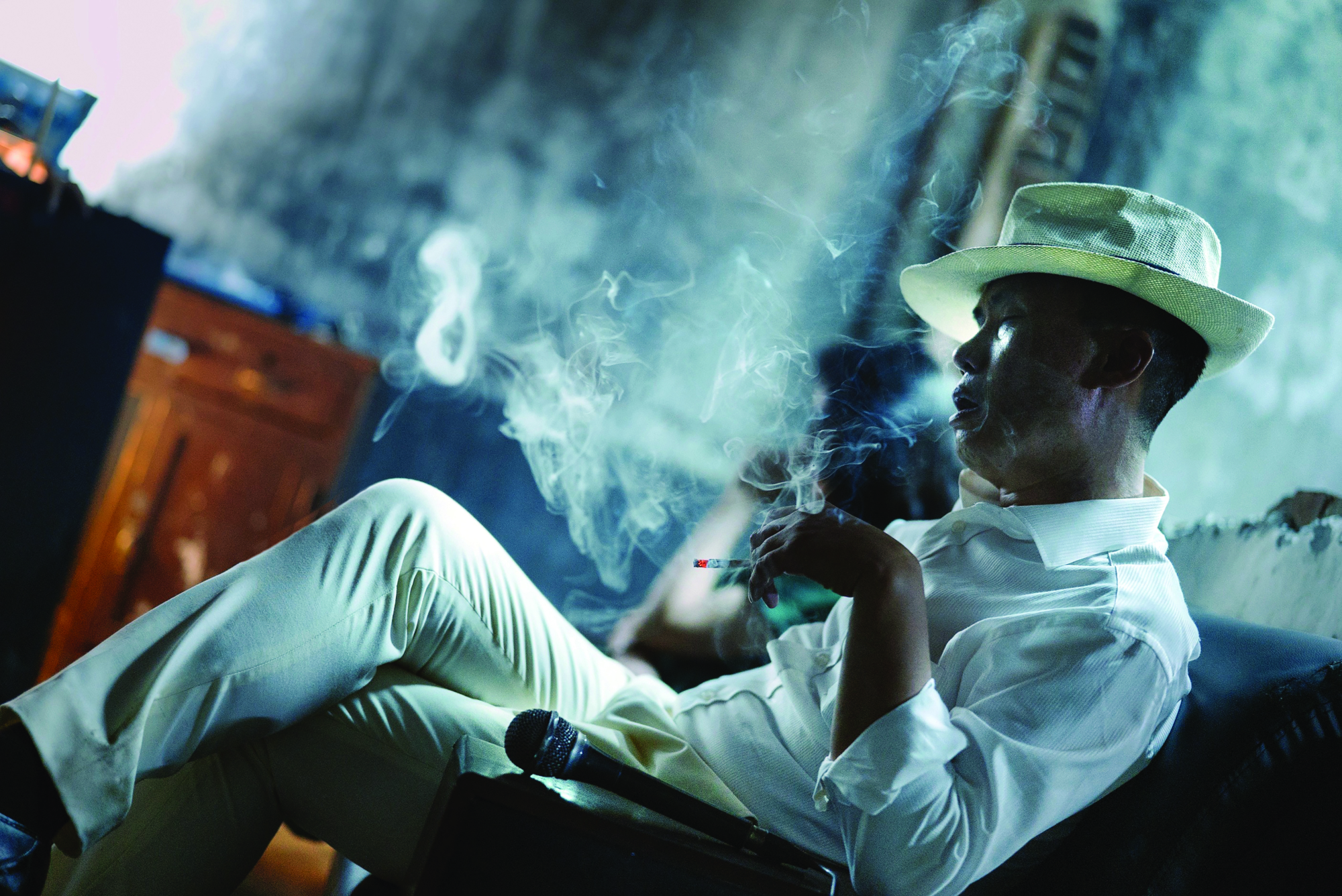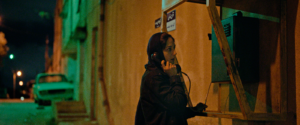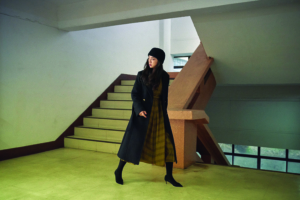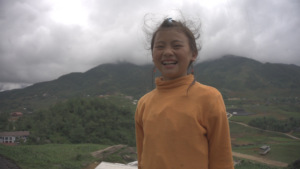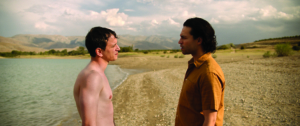Before my bed
there is bright moonlight
So that it seems
like frost on the ground:
Lifting my head
I watch the bright moon,
Lowering my head
I dream that I’m home.
—Li Bai[1]Li Bai, ‘Quiet Night Thoughts’, in Li Po and Tu Fu, trans. Arthur Cooper, Penguin, London, 1973, p. 109.
‘Quiet Night Thoughts’, one of China’s most famous poems,[2]It is still taught to Chinese schoolchildren today; see ‘Li Bai and His Poetry’, Followcn, 11 February 2017, <https://culture.followcn.com/2017/02/11/li-bai-poetry/>, accessed 20 May 2019. by Li Bai,[3]Also known in the West as ‘Li Po’; see ‘Li Bai’, official website, <http://sacrificeworldwide.com/li-bai/>, accessed 28 May 2019. one of the country’s most historically significant poets, may have been written over twelve centuries ago, but its spartan, homesick imagery and the liminal, dreamlike state it evokes have peculiar kinship with three very different yet thematically similar 2018 arthouse films from across the East Asian region. In Long Day’s Journey into Night, by Chinese director Bi Gan, a shady antihero goes on a surreal search through his home town for a lost lover. In Cities of Last Things, by Taiwan-based Malaysian director Ho Wi Ding, a police detective’s hard-boiled psychology is reverse-engineered from past relationships with women. And in Winter’s Night, by South Korean director Jang Woo-jin, a long-married couple are forced to confront their relationship when they get stranded overnight at the temple where they had their first date. These three films – which premiered at the Cannes, Toronto and Jeonju film festivals, respectively – share a distinctive, expressly haunted, deconstructed approach to time, the night and memory, even as they differ in the means by which they achieve it.
Any three such wilfully enigmatic works will constitute something of a reflecting pool: we may see only what we want to in them, and magnify commonalities that would not otherwise present themselves. But while taking to heart another lesson from Li – who is perhaps best known in the West as the poet who, legend has it, drowned while trying to kiss the reflection of the moon in the water[4]ibid. (an image irresistibly evoked in the upside-down pondside kissing scene in Long Day’s Journey) – there is still a sense that they flow along the same singular current. If their woozy atemporality is not exactly a new wave in Asian cinema (and indeed has its forebears in the films of Wong Kar Wai, Tsai Ming-liang, Hou Hsiao-hsien, Apichatpong Weerasethakul and even Hong Sang-soo), this confluence, at this moment in time, is at least a significant ripple.
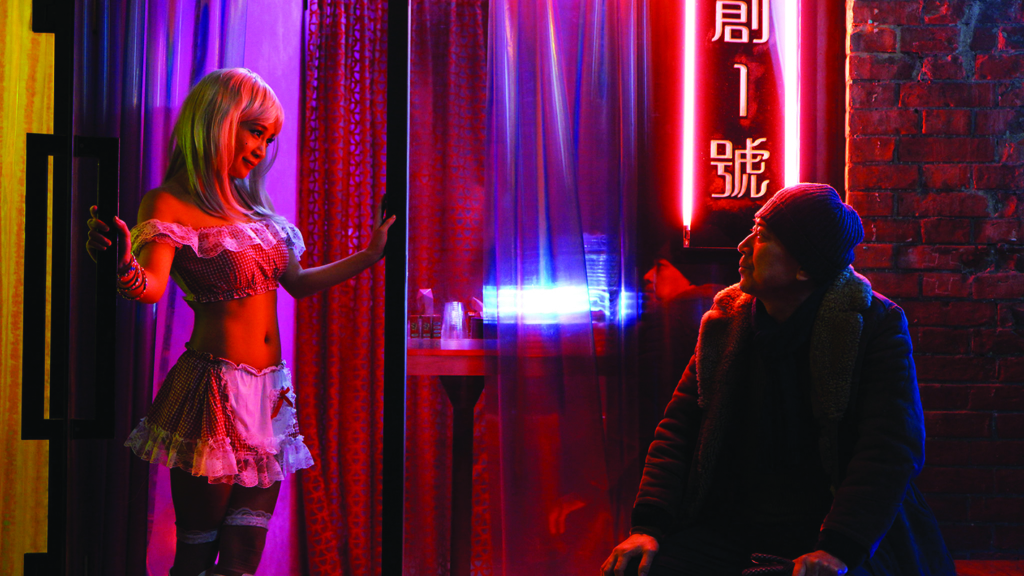
All three films are set at night. Bi’s and Jang’s even have the word in their titles – twice over in Bi’s, if you consider that Long Day’s Journey’s original title translates to ‘Last Night on Earth’ (cuing a brilliant but backfiring New Year’s Eve marketing campaign in China that sold it as a last-night-of-the-year event movie[5]See Rebecca Davis, ‘Chinese Art Movie Long Day’s Journey Enjoys Big Opening amid Growing Backlash’, Variety, 2 January 2019, <https://variety.com/2019/film/news/long-days-journey-into-night-bi-gan-tang-wei-box-office-1203097415/>, accessed 20 May 2019.). And Cities of Last Things trebles down on the night-time theme by being set over three nights in its protagonist’s life, each progressively later by the clock, though progressively earlier in the man’s experience.
Partly, the choice is aesthetic: the noirish overtones of the films by Bi and Ho suit the oily neons of the midnight city, while Winter’s Night – which may be set in the bucolic environs of a Buddhist temple, but shares those more urban films’ electric-blue and hot-pink lighting motif – achieves a lot of its visual dreaminess through the uncanny inversion that is a dark sky vaulting over grounds bright with fresh snow. However, it is also because the night-time contains those witching hours when the membrane between real and unreal is thinner than in the bold light of day: those not-yet-asleep, not-wholly-awake moments when, like Li mistaking the moonlight in his bedchamber, we’re vulnerable to an unbidden, nameless longing for a faraway place or a long-ago person. All three films, in one way or another, literalise this quasi-mystical nocturnal state, allowing characters to revisit places of deep emotional significance to them, and to interact with past versions of themselves or with those they once loved and lost to time.
Moreover, each film details a heterosexual love affair. The memory of a more or less fatale femme haunts the archetypal noir protagonists of Long Day’s Journey and Cities of Last Things (an erstwhile casino manager and a cop, respectively). More wryly, the middle-aged couple at the centre of Winter’s Night live with the ghosts of the way they once were and the unconsummated ambitions they once had for themselves. In each case, the search for lost love is not really that; it is a search for a lost version of oneself. So, while Bi’s and Ho’s films in particular can and have been critiqued for the flimsy characterisation of their female muses,[6]See, for example, Shelly Kraicer, ‘Cities of Last Things (Ho Wi Ding, Taiwan/China/US/France) – Platform’, Cinema Scope, 2018, <http://cinema-scope.com/cinema-scope-online/cities-of-last-things-ho-wi-ding-taiwan-china-us-france-platform/>; and Dilara Elbir, ‘NYFF ’18 Review: Long Day’s Journey into Night’, Much Ado About Cinema, 12 October 2018, <https://muchadoaboutcinema.com/2018/10/12/nyff-2018-review-long-days-journey-into-night/>, both accessed 3 June 2019.that apparent insubstantiality is partly an element borrowed from film noir’s ingrained sexism, and partly a side effect of a deeper interest in the subjective identity vision-quest of each tale’s (male) protagonist.
All three films, in one way or another, literalise this quasi-mystical nocturnal state, allowing characters to revisit places of deep emotional significance to them, and to interact with past versions of themselves or with those they once loved and lost to time.
This is felt most acutely in Long Day’s Journey, in which the lost love, Wan Qiwen (Tang Wei), is less a true character than a collection of prompts, signifiers and aide-mémoires – a green dress, a wild pomelo, a bare foot, a smear of lipstick, a name that sounds like a movie star’s. She is a Proustian madeleine in a film littered with them: broken clocks and stopped watches; apples, rotten and fresh and eaten, core and all, by silently weeping dead men; bees and honey and the honeycomb pattern of railings and floor tiles; water, dripping and pooling and placid, and at one point contained in a glass rattled slowly off a table by a passing train, in a beautiful, unsubtle and yet unmistakably reverent homage to Andrei Tarkovsky’s Stalker (1979). The glass falls, but we’re whipped away by a cut before it smashes. Later, a minute-long firework will burn impossibly long and, although it is perceptibly burning down, we will cut before it gutters. Split-second, ephemeral events are thus prised open to contain eternities.
Most of these symbols crop up in the first half of this markedly bisected film, wilfully remembered into being by the taciturn Luo Hongwu (Huang Jue), spurred by his return to his hometown of Kaili following the death of his father. But the way Bi presents these fragmentary images – the order in which they appear – is confoundingly precise despite an apparent lack of logic. Bi has insisted that, whereas time was the central preoccupation of his debut, Kaili Blues (2015), Long Day’s Journey is about dreams.[7]See Jordan Cronk, ‘Overnight to Distant Cities’, Film Comment, March–April 2019, <https://www.filmcomment.com/article/overnight-to-distant-cities/>, accessed 20 May 2019. Yet the division between memory (a function of time) and dream (a function of the imagination) is highly porous, and the studied stylistic separation of the film’s two halves – with the first unfolding in classical, if languorous, montage, and the second bursting into 3D and snaking through its fifty-nine minutes in an unbroken travelling shot – suggests a far more intriguing, and more rigorous (if playfully perverse), relationship to time than the handy catch-all ‘dream logic’ can convey.

In fact, in among all the other clues and echoes, deja vus and jamais vus, there is a motif that accounts for both the uncanny editorial precision of those non-chronological shards of memory and the fluid, expansive, sensorial flooding of the second half. The green book that Luo inherited from his mother (who may or may not be the same woman as his half-remembered lover) is said to contain words that, if spoken aloud, can make a house spin. It is a spell book, and, as with a spell, the memory-based first half of Long Day’s Journey is presented to us in an exacting, enigmatic way because the minutely calibrated incantation needs to happen precisely, in order for the magic – the film’s swooping second half – to occur.
Read this way, with spell-casting memory cueing magical dream, the question then becomes: which is the more real, the more significant? It’s here that time and chronology play a major role: while logic dictates that memory (which is, as Luo says, at least ‘partly truth’) should be closer to the real than a dream can ever be, the form of the film countermands that assumption. Not only does the use of 3D suggest the depth, spatial relativity and hard edges of the tangible, but the tracking shot also ensures that the whole second half occurs in what we tellingly term ‘real time’.
Within this one, unbroken sequence, although there are literal flights of fancy and encounters with skull-masked ghost-boys, there are also segments governed by the unpredictable chaos of real, spontaneous life. There’s a ping-pong match, a zip-line journey, a game of pool and an unfakeable moment in which a recalcitrant donkey bucks beneath its load, sending apples – again, apples – rolling mesmerically across the ground. And there is also a woman – a real one, this time, played by the same actress who performs as the cipher-woman in the film’s first half. This one is stubborn and surly, whereas Qiwen was wispily, fragrantly mysterious: she may be in a dream, but she is no dream girl. The spellbound past has been wonkily reborn in a present-tense dream, but it’s been transformed, shorn of nostalgia and stripped of memory’s great lie: that what we once had was more wonderful than what we have right now.
Like the eternally burning firework of Long Day’s Journey, or the tick-tock of the taxi’s blinkers in Winter’s Night, the ending of Cities of Last Things makes a defiantly hopeful, ongoing, dangling present tense out of a long-gone past.
This surprising, elusive optimism – coming down cautiously on the side of the skittish now against the seductive then, of the real against the remembered and romanticised – is also what gives Winter’s Night, for all its melancholic snowbound squabbling, its obscure uplift. In similarly long, steady takes (these films all seem like playful interrogations of André Bazin’s theory of the long take,[8]For an accessible primer on this topic, see Mark Le Fanu, ‘Metaphysics of the “Long Take”: Some Post-Bazinian Reflections’, p.o.v., no. 4, December 1997, <https://pov.imv.au.dk/Issue_04/section_1/artc1A.html>, accessed 20 May 2019. applying the extended shot’s power of verisimilitude to scenes that are inherently un– or surreal), Eun-joo (a terrific Seo Young-hwa) and her husband, Heung-joo (Yang Heung-joo), get stranded at a temple they’re visiting for the second time. They find a room to stay in, but both end up sneaking out into the snowy night. Heung-joo gets staggeringly drunk with a possibly imaginary old flame, while Eun-joo encounters a young couple hesitantly courting. The woman (Lee Sang-hee) of this pair is implicitly suggested to be Eun-joo herself at a younger age, about to embark on the very relationship that she now finds so unfulfilling.
The surprise of Jang’s graceful yet piercing screenplay is that, when the girl asks Eun-joo for advice about her soldier-boyfriend, the reply is tacitly encouraging. In this scene, it feels as if Eun-joo is admitting that, for all her current negativity towards Heung-joo (‘Honestly, I’m bored out of my mind,’ she tells him. ‘You’re just not fun’), their life together would be worth repeating all over again. Here, in this surreally suspended moment marked, much like Long Day’s Journey, by lonesome recurring motifs – a forgotten glove, a stone prayer pile, a car’s hazard lights flashing rhythmically – Eun-joo has the option of changing the course of her life up to this point, but subtly, equivocally, chooses not to.
Cities of Last Things, with its more obvious archetypes and thrillerish plotline, uses a striking formal conceit to direct its questions around time and memory more strongly towards the audience than towards the characters who are, in longstanding noir tradition, trapped in their fates like insects in amber. Divided into three segments, the film moves forwards as its narrative years hop backwards. Initially, in a dystopian near-future Taipei of driverless buses and staterun suicide-clean-up squads, disillusioned ex-cop Zhang (a grizzled Jack Kao) is hell-bent on a shady mission of revenge involving his unfaithful wife when he is distracted by a face from the past. In the middle section, a younger Zhang (Lee Hong-Chi – who, coincidentally, also plays the dead friend in Long Day’s Journey) is at the tipping point between idealism and cynicism when he encounters the beautiful Ara (Louise Grinberg) and spends a delirious night with her, dreaming of escape from the city even while they’re swaddled in its sticky, synthetic embrace. And, in the last/earliest section, a younger-still Zhang (Xie Zhang-Ying) is waiting in a police station, where he meets a lady gangster (a blazing Ding Ning) who turns out to be everything and nothing to him.
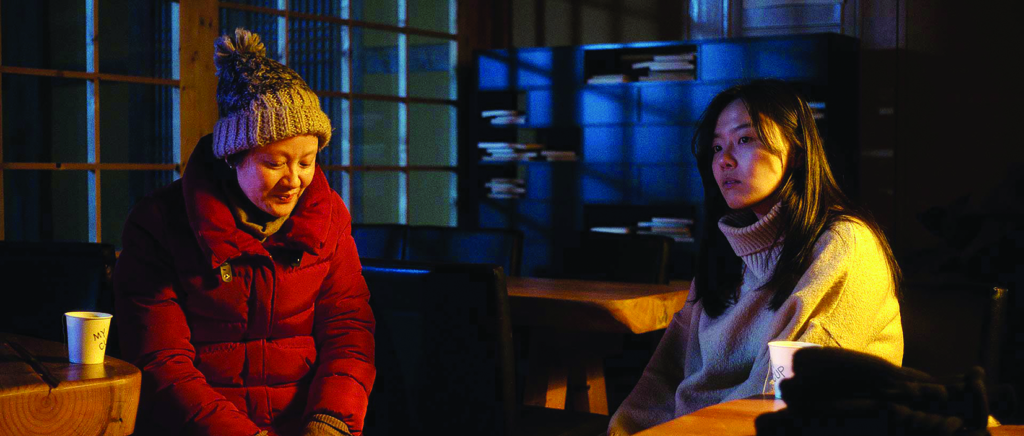
Told forwards, the story tracks a grim trajectory. But told backwards, with each section progressively later in the night, pivoting around the midnight-set midpoint and the palindromic Ara, cinematic time gazumps narrative time: the intervening years seem to disappear and the three nights elide into one. So although, rationally, we know what will become of the young Zhang because we’ve already seen it, the cinematic sensation is of openness, youthful uncertainty, a future unwritten in the last hours before a new dawn. Like the eternally burning firework of Long Day’s Journey, or the tick-tock of the taxi’s blinkers in Winter’s Night, the ending of Cities of Last Things makes a defiantly hopeful, ongoing, dangling present tense out of a long-gone past.
In an edition of the Film Comment podcast from Cannes last year, American critic Amy Taubin expressed a deep frustration with Bi’s film for its apolitical nature,[9]See Amy Taubin, in ‘The Film Comment Podcast: Cannes Day Eight’, Film Comment, 16 May 2018, <https://www.filmcomment.com/blog/film-comment-podcast-cannes-day-eight/>, accessed 20 May 2019. a critique that could certainly extend to Winter’s Night and Cities of Last Things, which are similarly lacking in any man-the-ramparts agenda. Yet, taken as a loose triptych, these films from different countries, made by directors at different stages of their careers who display little in common in their prior filmographies, do provide a markedly choral artistic response to the key regional sociopolitical issue of the teething years of the so-called Asian Century. The Asian story at the beginning of the twenty-first century is defined by the conflict between tradition – ancestor worship; hometown loyalty; an acceptance that the long lineage of the family unit takes precedence over any one of its individual members’ current, fleeting desires – and the unstoppable march of modernity, fuelled by China’s mushroom-cloud economic expansion. Perhaps it is the very violence and pervasiveness of the ceaseless ideological collision between a stately, revered past and an urgent, greedy future that has made it an artistic necessity to create a buffer space in between those warring impulses, especially when more overt works of social-realist commentary, exemplified by the internationally celebrated films of Jia Zhang-Ke, already comprise a movement of their own.
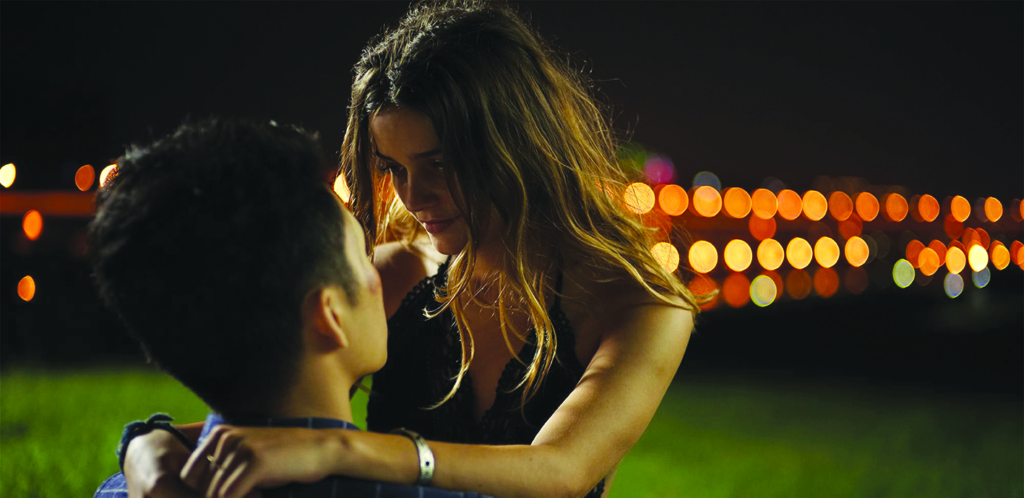
And so we get Long Day’s Journey into Night, Cities of Last Things and Winter’s Night, which imagine a kind of psychological caesura, a luxuriant extended moment of contemplation – sometimes rueful, sometimes playful, but outside (or carved out like a grotto deep within) the relentless onrush of time. And not to be too fanciful, but slipping the noose of time for a spell does connect us to past and future generations in a way a more topical approach would not. However noisy the world has been, and however much noisier it will get, there will always be someone – a poet of some sort, perhaps – looking blearily up at the moon from a quiet bed and thinking of home.
Endnotes
| 1 | Li Bai, ‘Quiet Night Thoughts’, in Li Po and Tu Fu, trans. Arthur Cooper, Penguin, London, 1973, p. 109. |
|---|---|
| 2 | It is still taught to Chinese schoolchildren today; see ‘Li Bai and His Poetry’, Followcn, 11 February 2017, <https://culture.followcn.com/2017/02/11/li-bai-poetry/>, accessed 20 May 2019. |
| 3 | Also known in the West as ‘Li Po’; see ‘Li Bai’, official website, <http://sacrificeworldwide.com/li-bai/>, accessed 28 May 2019. |
| 4 | ibid. |
| 5 | See Rebecca Davis, ‘Chinese Art Movie Long Day’s Journey Enjoys Big Opening amid Growing Backlash’, Variety, 2 January 2019, <https://variety.com/2019/film/news/long-days-journey-into-night-bi-gan-tang-wei-box-office-1203097415/>, accessed 20 May 2019. |
| 6 | See, for example, Shelly Kraicer, ‘Cities of Last Things (Ho Wi Ding, Taiwan/China/US/France) – Platform’, Cinema Scope, 2018, <http://cinema-scope.com/cinema-scope-online/cities-of-last-things-ho-wi-ding-taiwan-china-us-france-platform/>; and Dilara Elbir, ‘NYFF ’18 Review: Long Day’s Journey into Night’, Much Ado About Cinema, 12 October 2018, <https://muchadoaboutcinema.com/2018/10/12/nyff-2018-review-long-days-journey-into-night/>, both accessed 3 June 2019. |
| 7 | See Jordan Cronk, ‘Overnight to Distant Cities’, Film Comment, March–April 2019, <https://www.filmcomment.com/article/overnight-to-distant-cities/>, accessed 20 May 2019. |
| 8 | For an accessible primer on this topic, see Mark Le Fanu, ‘Metaphysics of the “Long Take”: Some Post-Bazinian Reflections’, p.o.v., no. 4, December 1997, <https://pov.imv.au.dk/Issue_04/section_1/artc1A.html>, accessed 20 May 2019. |
| 9 | See Amy Taubin, in ‘The Film Comment Podcast: Cannes Day Eight’, Film Comment, 16 May 2018, <https://www.filmcomment.com/blog/film-comment-podcast-cannes-day-eight/>, accessed 20 May 2019. |
